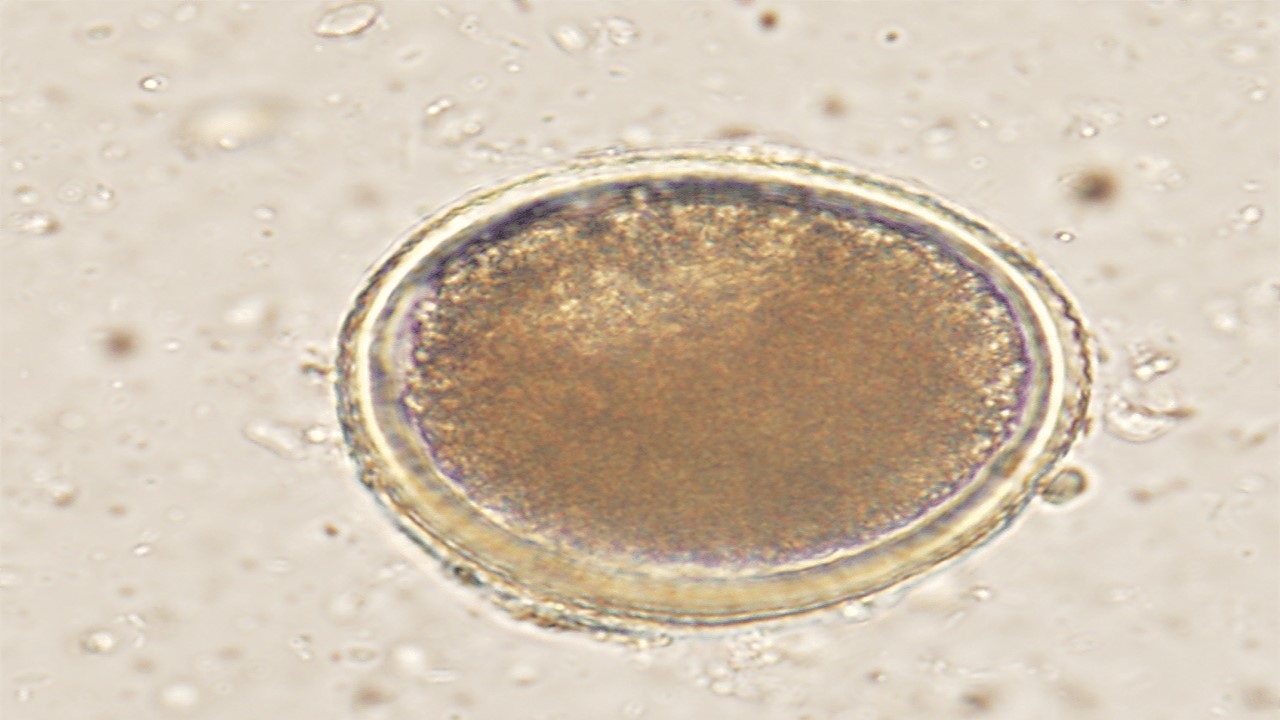Prevalence and Risk Factors of Gastrointestinal Helminth Infection in Pet Cats in Wonogiri District, Central Java

Downloads
Gastrointestinal helminth infection is the most common and the easiest infection to infect wild cats or pet cats but is often ignored by the cat owners because sometimes there are no symptoms or a lack of attention from the cat owner to their pet cat. The aim of this study was to estimate the prevalence and risk factors of gastrointestinal helminth infection in pet cats in Wonogiri District, Central Java. A total of 100 cat samples were evaluated using a questionnaire, then fecal microscopic examination using simple native method, sedimentation, and floatation methods. Data obtained from this study were presented descriptively and analyzed using the Chi-Square test. The result showed that 37 out of 100 fecal samples were found positive infected with gastrointestinal helminth including Toxocara cati and Dipylidium caninum or the prevalence of gastrointestinal helminth infection can be calculated at 37%. The result of the analysis of significant risk factors were breed, number of pet cat owners, grooming, deworming, and vaccination.
Budinegara, S. 2018. Kasih Tak Bersyarat: Konstruk Pemaknaan Hubungan Manusia-Anjing Peliharaan. Calyptra: Jurnal Ilmiah Mahasiswa Universitas Surabaya, Vol.7 No.1, 2554-2570.
Febriani, A. A., Warastri, A., dan Komarudin, S. 2021. Hubungan Antara Kelekatan Terhadap Kucing Peliharaan dengan Stres di Masa Pandemi COVID-19 [Doctoral dissertation]. Yogyakarta: Universitas Aisyiyah Yogyakarta.
Siagian, T.B., dan Fikri, F. H. 2019. Infestasi Ektoparasit pada Kucing di Klinik Hewan Kabupaten Bogor. Kendari (ID): SNT2R.
Iturbe Cossío, T. L., Montes Luna, A. D., Ruiz Mejia, M., Flores Ortega, A., Heredia Cárdenas, R., and Romero Núñez, C. 2021. Risk Factors Associated with Cat Parasites in a Feline Medical Center. Journal of Feline Medicine and Surgery Open Reports, 7(2), 20551169211033183.
Center for Disease Control and Prevention. 2019. Laboratory Identification of Parasites of Public Health Concern: Dipylidium caninum. https://www.cdc.gov/dpdx/dipylidium/index.html, [01 Januari 2021].
Center for Disease Control and Prevention. 2019. Laboratory Identification of Parasites of Public Health Concern: Toxocariasis https://www.cdc.gov/dpdx/ toxocariasis/index.html, [01 Januari 2021].
Murniati, M., Sudarnika, E., dan Ridwan, Y. 2016. Prevalensi dan Faktor Risiko Infeksi Toxocara cati pada Kucing Peliharaan di Kota Bogor. Jurnal Kedokteran Hewan-Indonesian Journal of Veterinary Sciences, 10(2), 139-142.
Nealma, S., I.M. Dwinata, dan I.B.M Oka. 2013. Prevalensi Infeksi Cacing Toxocara cati Pada Kucing Lokal di Wilayah Denpasar. Indonesia Medicus Veterinus, 2(4): 428-436.
Nugraha A. A. S., Hidayat N., dan Fanani L. 2018. Sistem Pakar Diagnosis Penyakit Kucing Menggunakan Metode Naí¯ve Bayes – Certainty Factor Berbasis Android. Jurnal Pengembangan Teknologi Informasi dan Ilmu Komputer, Vol. 2, No. 2.
Sari, W. N., dan Sitepu, A. R. 2021. Diagnosa dan Penanganan Otitis Media Pada Kucing Persia di Central Pet Care. Fanik: Jurnal Faperta Uniki, 2(1), 1-6.
Sudarnika, E., dan Ridwan, Y. 2015. Prevalensi dan Faktor Resiko Infeksi Cacing Zoonotik Pada Kucing Peliharaan di Kota Bogor. Institut Pertanian Bogor. Jurnal Kedokteran Hewan. 10(2): 140-141.
Sucitrayani, P. T. E., Oka, I. B. M., dan Dwinata, M. 2014. Prevalensi Infeksi Protozoa Saluran Pencernaan pada Kucing Lokal (Felis catus) di Denpasar. Buletin Veteriner Udayana, 6(2), 153-159.
Suroiyah, F. A., Hastutiek, P., Yudhana, A., Sunarso, A., Purnama, M. T. E., & Praja, R. N. 2018. Prevalensi Infeksi Toxocara cati pada Kucing Peliharaan di Kecamatan Banyuwangi. Jurnal Medik Veteriner, 1(3), 99-104.
Copyright (c) 2023 Dara Ayu Pramesti Sekarsari, Amung Logam Saputro, Bodhi Agustono, Maya Nurwartanti Yunita, Ratih Novita Praja, Tridiganita Intan Solikhah

This work is licensed under a Creative Commons Attribution-ShareAlike 4.0 International License.
Journal of Basic Medical Veterinary (JBMV) by Unair is licensed under a Creative Commons Attribution-ShareAlike 4.0 International License.
1. The journal allows the author to hold the copyright of the article without restrictions.
2. The journal allows the author(s) to retain publishing rights without restrictions
3. The legal formal aspect of journal publication accessibility refers to Creative Commons Attribution Share-Alike (CC BY-SA).
4. The Creative Commons Attribution Share-Alike (CC BY-SA) license allows re-distribution and re-use of a licensed work on the conditions that the creator is appropriately credited and that any derivative work is made available under "the same, similar or a compatible license”. Other than the conditions mentioned above, the editorial board is not responsible for copyright violation.







 Perhimpunan Dokter Hewan Indonesia
Perhimpunan Dokter Hewan Indonesia








